Fall 2022 Seminars
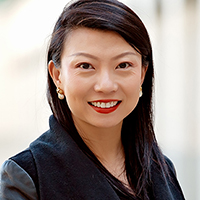
September 1, 2022
Grace Gao
Assistant Professor, Stanford University
Robust Autonomous Vehicle Localization: from Tandem Drifting Cars to “GPS” on the Moon
Abstract:
Autonomous vehicles often operate in complex environments with various sensing uncertainties. On Earth, GPS signals can be blocked or reflected by buildings; and camera measurements are susceptible to lighting conditions. While having a variety of sensors is beneficial, including more sensing information can introduce more sensing failures as well as more computational load. For space applications, such as localization on the Moon, it is even more challenging.
In this talk, I will present our recent research efforts on robust vehicle localization under sensing uncertainties. Inspired by cognitive attention in humans, we select a subset of “attention landmarks” from GPS and camera measurements to reduce computation load and provide robust positioning. I will also show our localization techniques that enable autonomous tandem drifting cars, as well as a “moonshot” project to design a GPS-like system for the Moon.
Bio:
Grace X. Gao is an assistant professor in the Department of Aeronautics and Astronautics at Stanford University. She leads the Navigation and Autonomous Vehicles Laboratory (NAV Lab). Before joining Stanford University, she was faculty at University of Illinois at Urbana-Champaign. She obtained her Ph.D. degree at Stanford University. Her research is on robust and secure perception, localization and navigation with applications to manned and unmanned aerial vehicles, autonomous driving cars, as well as space robotics.
Prof. Gao has won a number of awards, including the NSF CAREER Award, the Institute of Navigation Early Achievement Award and the RTCA William E. Jackson Award. She received the Inspiring Early Academic Career Award by Stanford University, and Distinguished Promotion Award from University of Illinois at Urbana-Champaign. She has won Best Paper/Presentation of the Session Awards 18 times at Institute of Navigation conferences. She received the Dean’s Award for Excellence in Research from the College of Engineering, University of Illinois. For her teaching and advising, Prof. Gao received AIAA Stanford Chapter Advisor of the Year Award. She won the Illinois College of Engineering Everitt Award for Teaching Excellence, the Engineering Council Award for Excellence in Advising, and AIAA Illinois Chapter’s Teacher of the Year.
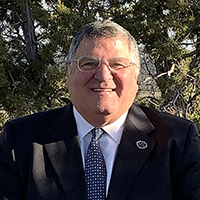
September 8, 2022
Nick Lappos
Senior Fellow, Sikorsky a Lockheed Martin Company
Advancing Air Mobility, a Discussion of the Future EVTOL World
Abstract:
A committee of the National Academy of Engineering released a report in the spring of 2020 that discusses the future world of advanced air mobility and presents a national blueprint for what that system might look like. Also identified were the areas that needed further work to sure the successful introduction of air vehicles into that space. This presentation will discuss what that future world might look like, what the technical and social barriers to the introduction of these concepts, and the path ahead for our society as our rural and urban areas adapt to low altitude vertical takeoff and landing aircraft. The discussion will include a brief introduction to the air vehicles, the key players in the development of the future system, and some of the barriers that must be overcome to ensure successful adaption to that future. It will be sufficient time for questions from the audience to spark further understand.
Bio:
Nick Lappos is Lockheed Martin Senior Fellow, and an Aerospace Engineering graduate of Georgia Tech. At Sikorsky Aircraft he has served as program director for the S-92® helicopter during its development, where it earned the 2002 Robert J. Collier Trophy. He also served as director of Test Engineering and Chief Research and Development test pilot, logging more than 8,500 hours in over 70 different types of helicopters. Lappos holds 25 patents and three world records. He is a member of the National Academy of Engineering and their Aeronautics and Space Engineering Board.
Lappos was a vice president for Gulfstream Aerospace Corp., and senior vice president and chief technology officer for Bell Helicopter. His honors include Dean’s List, Tau Beta Pi, and Sigma Gamma Tau. He is a member of the Academy of Distinguished Alumni of Georgia Tech, a recipient of the Sir Barnes Wallis Medal from the UK Guild of Air Pilots and Navigators, and an Honorary Fellow and Technical Fellow of the Vertical Flight Society, a recipient of their Frederick Feinberg Award, as well as their 2019 Nikolsky Honorary Lectureship. He received the Society of Experimental Test Pilots Tenhoff Award and the Twirly Bird’s Les Morris Award. He is an Associate Fellow in the AIAA. He is Chairman of the Vertical Lift Consortium. He is a decorated veteran of the Vietnam war, where he flew Cobra helicopters.
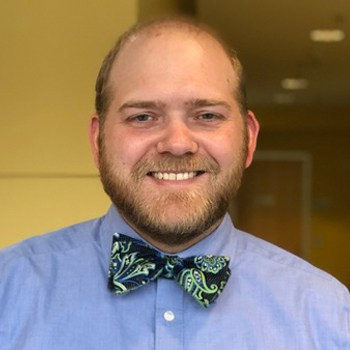
September 15, 2022
Aaron Johnson
Assistant Professor, University of Michigan
Bridging the Gap between Coursework and Ill-Defined, Sociotechnical Engineering Practice
Abstract:
Bio:
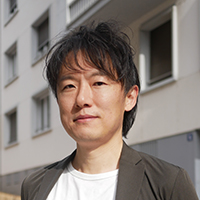
September 29, 2022
Hiroyuki Koizumi
Associate Professor, Department of Advanced Energy, The University of Tokyo Visiting Associate Professor, Massachusetts Institute of Technology (planned 2022.4-2023.2)
Micropropulsion systems using water as a propellant
Abstract:
The University of Tokyo has been researching various micropropulsion systems using water as a propellant for diversified microsatellite missions. In this seminar, I will introduce the research and development status of these propulsion systems: 1: water ion thrusters for missions that require high specific impulse; 2: water resistojet thrusters for missions that require high and multi-directional thrusts; 3: water Hall-effect thrusters for further delta-V requirement using high-electrical power, and 4: water-metal combustion thrusters for high thrust enough for impulsive maneuvers. The first two thrusters have ongoing flight programs, and those are also introduced here. The water ion thruster is based on the design developed for xenon propellant and demonstrated in orbit in 2014 and 2015. The university spin-off company, Pale Blue, developed its demonstration model and is scheduling its launch and operation on JAXA Innovative Satellite Technology Demonstration-4 by early 2023. The water resistojet thruster was equipped on 6U Lunar CubeSat, EQUULEUS, which has been waiting for the launch by Artemins 1 in 2022. The other two thrusters are in the research phase and do not yet have a flight program, but here is the latest status of their research.
Bio:
Hiroyuki Koizumi is an Associate Professor in the Department of Advanced Energy and Department of Aeronautics and Astronautics at the University of Tokyo, Japan, where he directs the Space Propulsion Laboratory and leads the development of micro-propulsion systems for microsatellites: Hodoyoshi-4, PROCYON, AQT-D, and EQUULEUS. In 2020, he started working as CTO at the space-propulsion startup Pale Blue Inc., which was founded by him and engineers who got Ph.D. at his lab. Previously, Hiroyuki Koizumi served as an Assistant Professor in the Institute of Space and Astronautical Science at JAXA from 2007 to 2011, where he was involved in Hayabusa-1 project and he was responsible for the operation of the ion engines mu-10 and the retrieval of the Hayabusa capsule at Woomera in Australia. He received a B.S. in Mechanical Engineering from Keio University, and M.S. and Ph.D. degrees in Aeronautics and Astronautics from the University of Tokyo. He was awarded the International Electric Propulsion Conference Best Paper Award (2015) and Prizes for Science and Technology, the Commendation for Science and Technology by the Minister of Education, Culture, Sports, Science and Technology (2017).
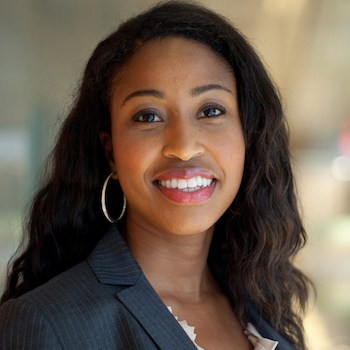
October 6, 2022
Nakhiah Goulbourne
Associate Professor, Department of Aerospace Engineering
On outliers, convergence, and equity – Stories from NSF
Abstract:
Dr. Goulbourne served 4 years as an IPA rotator and Program Director for the Mechanics of Materials and Structures program (MoMS) within the Engineering Directorate’s Division of Civil, Mechanical, and Manufacturing Innovation at the National Science Foundation. During this time, she led and participated in a number of agency initiatives stimulating new research directions and equitable research practices. In this talk, she will share her experience and lessons learned during this time focusing on three main initiatives: convergence research at NSF, outliers viz a viz high risk/high reward research, and equity in STEM. She will conclude her talk by highlighting newer and lesser-known funding research opportunities at NSF. The views expressed are her own and do not reflect those of the National Science Foundation.
Bio:
Dr. Nakhiah Goulbourne is Associate Professor of Aerospace Engineering at the University of Michigan in Ann Arbor. She received her BA degree in Physics from Middlebury College, and M.S. and Ph.D. degrees in Mechanical Engineering from the Pennsylvania State University. She received the NSF CAREER award in 2008. Prior to joining the University of Michigan in 2009, she was Assistant Professor of Mechanical Engineering at Virginia Polytechnic Institute and State University. Over the last 15 years, she has built a diverse research portfolio that is reflective of her general interest in mechanics of soft materials. From 2018 – 2022, she served as NSF program director for the Mechanics of Materials and Structures program (MoMS) within the Division of Civil, Mechanical, and Manufacturing Innovation. In 2021, she received the National Science Foundation Director’s Award for Superior Accomplishment. She is the foundational lead and primary author of the new Boosting Research Ideas for Transformative and Equitable Advances in Engineering (BRITE) solicitation. She initiated and led the EcoManufacturing thrust of the NSF-wide Future Manufacturing program, and served on several other NSF Working Groups including Emerging Frontiers Research Initiative (EFRI), Predictive Intelligence for Pandemic Preparedness (PIPP), Future of Work-Human Technology Frontier Program (FW-HTF). In 2020, she spent a brief stint as Program Director in the Convergence Accelerator Office. She initiated and helped develop the CMMI Game Changers Academy (CGCA), a professional development program-providing faculty with skills to better identify high risk-high reward research ideas and enable a fair and equitable proposal review process. She served as Chair of the Engineering Directorate Broadening Participation and Racial Equity Working Group, which developed recommendations for the Engineering Directorate to create opportunities to enable the broad engineering community to create a culture of equity and inclusion.

October 13, 2022
Perrine Pepiot
Associate professor, Sibley School of Mechanical and Aerospace Engineering, Cornell University
Innovations in capturing detailed chemical kinetic features in Large-Eddy simulations of turbulent combustion
Abstract:
Bio:
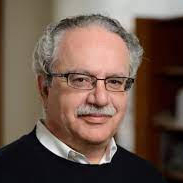
October 20, 2022
Yannis Kevrekidis
Bloomberg Distinguished Professor, Chemical and Biomolecular Engineering, Applied Mathemetics and Statistics, and Medical School, Johns Hopkins
No equations, no variables, no parameters, no space, no time: Data and the modeling of complex systems
Abstract:
Obtaining predictive dynamical equations from data lies at the heart of science and engineering modeling, and is the linchpin of our technology. In mathematical modeling one typically progresses from observations of the world (and some serious thinking!) first to equations for a model, and then to the analysis of the model to make predictions. Good mathematical models give good predictions (and inaccurate ones do not) – but the computational tools for analyzing them are the same: algorithms that are typically based on closed form equations.
While the skeleton of the process remains the same, today we witness the development of mathematical techniques that operate directly on observations -data-, and appear to circumvent the serious thinking that goes into selecting variables and parameters and deriving accurate equations. The process then may appear to the user a little like making predictions by looking in a crystal ball.
Our work here presents a couple of efforts that illustrate this “new” path from data to predictions. One will be in discovering emergent spaces, in which initially disorganized data can be modeled “easier, better, faster.”
The second will be in finding transformations across different models of the same phenomenon – deciding when two systems can be thought of as different observations of the same problem. The third (time permitting) will be in automating the generation of optimal algorithms.

October 27, 2022
Marco Pavone
Associate Professor, Department of Aeronautics and Astronautics, Stanford University & Director of Autonomous Vehicle Research at NVIDIA
No equations, no variables, no parameters, no space, no time: Data and the modeling of complex systems
Abstract:
AI-powered autonomous vehicles that can learn, reason, and interact with people are no longer science fiction. Self-driving cars, unmanned aerial vehicles, and autonomous spacecraft, among others, are continually increasing in capability and seeing incremental deployment in more and more domains. However, fundamental research questions still need to be addressed in order to achieve full and widespread vehicle autonomy. In this talk, I will discuss our work on addressing key open problems in the field of vehicle autonomy, particularly in pursuit of safe, data-driven autonomy stacks. Specifically, I will discuss (1) robust human prediction models for both simulation and real-time decision making, (2) AI safety frameworks for autonomous systems, and (3) novel, highly integrated autonomy architectures that are amenable to end-to-end training while retaining a modular, interpretable structure. The discussion will be grounded in autonomous driving and aerospace robotics applications.
Bio:
Dr. Marco Pavone is an Associate Professor of Aeronautics and Astronautics at Stanford University, where he is the Director of the Autonomous Systems Laboratory and Co-Director of the Center for Automotive Research at Stanford. He is currently on a partial leave of absence at NVIDIA serving as Director of Autonomous Vehicle Research. Before joining Stanford, he was a Research Technologist within the Robotics Section at the NASA Jet Propulsion Laboratory. He received a Ph.D. degree in Aeronautics and Astronautics from the Massachusetts Institute of Technology in 2010. His main research interests are in the development of methodologies for the analysis, design, and control of autonomous systems, with an emphasis on self-driving cars, autonomous aerospace vehicles, and future mobility systems. He is a recipient of a number of awards, including a Presidential Early Career Award for Scientists and Engineers from President Barack Obama, an Office of Naval Research Young Investigator Award, a National Science Foundation Early Career (CAREER) Award, a NASA Early Career Faculty Award, and an Early-Career Spotlight Award from the Robotics Science and Systems Foundation. He was identified by the American Society for Engineering Education (ASEE) as one of America’s 20 most highly promising investigators under the age of 40.
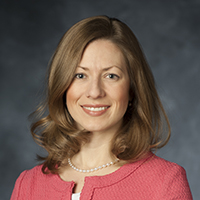
November 3, 2022
Lesley A. Weitz
Senior Principal Aerospace Engineer and Department Chief Scientist, The MITRE Corporation, Center for Advanced Aviation System Development
Challenges in Modernizing the National Airspace System
Abstract:
The MITRE Corporation’s Center for Advanced Aviation System Development (CAASD) is the Federally Funded Research and Development Center (FFRDC) for the Federal Aviation Administration (FAA). In this role, MITRE CAASD works with the FAA to study and improve today’s operations in the National Airspace System (NAS) and envision future operations and their enabling technologies. The future NAS will support diverse users – uncrewed systems, Advanced Air Mobility, space launch and re-entry operations, as well as traditional air transport and general aviation operations – through increasing levels of automation and information exchange to aid in data-driven decision making and proactive safety monitoring.
This presentation will provide a high-level overview of MITRE CAASD’s work supporting the FAA in achieving a more information-centric NAS that supports diverse airspace users. Real-world challenges where technology, human decision makers and operators, policies, and budgets intersect will be highlighted. If that is not ambitious enough, this presentation will also cover workforce needs, where you will be thoroughly convinced your aerospace engineering education was the best decision you have ever made.
Bio:
Dr. Lesley A. Weitz is a Senior Principal Aerospace Engineer and Department Chief Scientist in MITRE CAASD. Her current research includes advanced avionics for NextGen concepts, including concept development, design, trajectory modeling, and performance analysis. Dr. Weitz is also leading a project to study the use of an aggregate NAS network model to study how traffic management strategies impact NAS resilience. Dr. Weitz is the Chair of an avionics standards body developing advanced avionics applications, and she developed an inter-aircraft spacing algorithm (think automatic cruise control for airplanes) as part of that work.
Dr. Weitz received her B.S. in Mechanical Engineering in 2002 from the University at Buffalo and her M.S. and Ph.D. degrees in Aerospace Engineering from Texas A&M University in 2005 and 2009, respectively. She is the author of over 45 peer-reviewed conference and journal papers. Additionally, she has been awarded a patent by the U.S. Patent and Trademark Office entitled, “Methods and Systems for Determining Required Interval Management Performance.” Dr. Weitz is an Associate Fellow of the American Institute of Aeronautics and Astronautics (AIAA), a former Chair of the Guidance, Navigation, and Control Technical Committee, and is currently the Director of the AIAA Aerospace Sciences Group.

November 10, 2022
Prof. Panagiotis Tsiotras
David and Andrew Lewis Endowed Chair, Daniel Guggenheim School of Aerospace Engineering, Institute for Robotics and Intelligent Machines, Georgia Institute of Technology, Atlanta, GA 30332-0150, USA
Control of Uncertainty or Control with Uncertainty? A New Control Design Paradigm for Autonomous Stochastic Systems
Abstract:
Uncertainty propagation and mitigation is at the core of all robotic and control systems. The standard approach so far has followed the spirit of control of a system “with uncertainties,” as opposed to direct control “of uncertainties.” Recent advances from controllability of the covariance of the distribution of the state trajectories provide us with a new tool to control stochastic systems with strict performance guarantees. In this talk I will review some recent results on covariance control for stochastic systems subject to probabilistic (chance) constraints and will demonstrate the applicability of the approach on several control and motion planning problems under uncertainty. I will also discuss some current trends and potential directions for future work.
Bio:
Dr. Panagiotis Tsiotras is the David and Andrew Lewis Endowed Chair Professor at the School of Aerospace Engineering at Georgia Tech. At Georgia Tech, he is also the Director of the Dynamics and Control Systems Laboratory and an Associate Director for the Institute for Robotics and Intelligent Machines (IRIM). His current research interests are in optimal and nonlinear control and their connections with AI and applications to aerial, space and ground vehicle autonomy. He holds degrees in Mechanical Engineering, Aerospace Engineering, and Mathematics. He is currently the Chief Editor of the Frontiers of Robotics and AI in the area of Space Robotics and an Associate Editor for Dynamical Games and Applications. Previously, he served at the Editorial Boards of the AIAA Journal of Guidance, Control, and Dynamics, the IEEE Transactions of Automatic Control, the IEEE Control Systems Magazine, and the Journal of Dynamical and Control Systems. He is the recipient of the NSF Career Award, the IEEE Excellence Award in Aerospace Control, the Outstanding Aerospace Engineer award from Purdue, and the Sigma Xi Research Excellence Award. He is a Fellow of AIAA, IEEE, and AAS.
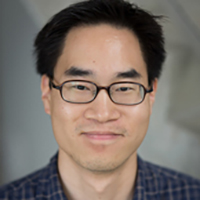
November 17, 2022
Benjamin Ahn
Associate Professor, Department of Engineering Education, The Ohio State University
Workplace Socialization in the Aerospace Engineering Profession
Abstract:
Every year newly graduated engineers enter the aerospace workforce to begin their careers. New engineers are expected to go through a socialization process in order to participate effectively in their new workplace. Examples of socialization include understanding their roles and responsibilities and identifying their workplace culture and norms. My research team studied the socialization process of recently hired aerospace engineers. Specifically, we examined socialization actions initiated by both new engineers (i.e., proactive behaviors) and their companies (i.e., organizational tactics) as a way for the new engineers to socialize into their companies. We also investigated the associations between socialization actions and new engineers’ socialization outcomes. Our findings showed that new engineers frequently relied on social interactions (e.g., networking and relationship building with managers) to adjust to their job position and organization, and often socialized through engaging in organizational tactics more than by practicing proactive behaviors. These results suggest that new engineers’ engagement in social interaction is a critical component that predicts their positive socialization outcomes in their new work environment. Our study findings contribute to understanding the onboarding process of recently graduated engineers entering aerospace engineering companies and offer implications for effective ways to support new engineers’ socialization into their new workplaces.
Bio:
Benjamin Ahn is an Associate Professor in the Department of Engineering Education at The Ohio State University. His research focuses on improving engineering education in classrooms and research settings. His research interests include (1) investigating the actions of recently-hired engineers during their onboarding period as well as the critical professional skills needed by 21st century engineers, (2) examining the mentoring practices that enhance engineering students’ ability to inquire, investigate, and make data-driven decisions, and (3) exploring mechanisms to teach technical knowledge and problem-solving skills to engineering undergraduate students. Benjamin received a Ph.D. in Engineering Education from Purdue University, an M.S. in Aeronautics and Astronautics from Purdue University, and a B.E. in Aerospace Engineering from the University of New South Wales (Australia). Prior to joining The Ohio State University, he was an Associate Professor in the Department of Aerospace Engineering at Iowa State University.
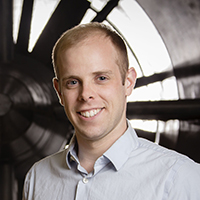
December 1, 2022
Philip Ansell
Associate Professor, Allen Ormsbee Faculty Scholar
Director, Center for High-Efficiency Electrical Technologies for Aircraft (CHEETA)
Chair, AIAA Electrified Aircraft Technology Technical Committee
Hydrogen-Electric Technologies for Future Zero-Emissions Aviation
Abstract:
The aeronautics industry has been challenged on many fronts to increase flight efficiency, reduce greenhouse gas emissions, and decrease dependence on traditional hydrocarbon fuels. Recently, the aviation sector has surpassed a CO2 production rate of 1 billion metric tons per year, which without new interventions in policy, technology, and business practices, will further increase alongside the growing air-transport market. Electrification of aircraft systems offers a promising avenue for decarbonizing aviation, though in a fashion unique from approaches used in other transportation markets. This talk will provide a background into aircraft electrification, describe technological developments that enable improvements towards environmentally-responsible air transportation, and forecast a vision for future generations of aircraft systems. A case study is provided, focusing on the integration of hydrogen-electric systems for zero-emissions aircraft operations.
Bio:
Dr. Phillip J. Ansell is an Associate Professor and Allen Ormsbee Faculty Scholar in the Department of Aerospace Engineering at the University of Illinois at Urbana-Champaign. He is also the director of the Center for High-Efficiency Electrical Technologies for Aircraft (CHEETA) focused on developing advanced technologies for electrified aircraft propulsion. His primary areas of work include subsonic and transonic aerodynamics, sustainable aviation, aero-propulsive integration, air-vehicle design, and aircraft propulsion electrification.
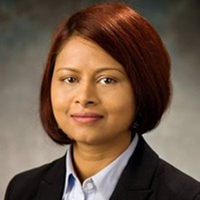
December 8, 2022
Ragini Acharya
Associate Professor, Aerospace Engineering, University of Tennessee Space Institute
Towards Predictive Modeling for Computational Hypersonics
Abstract:
Bio: